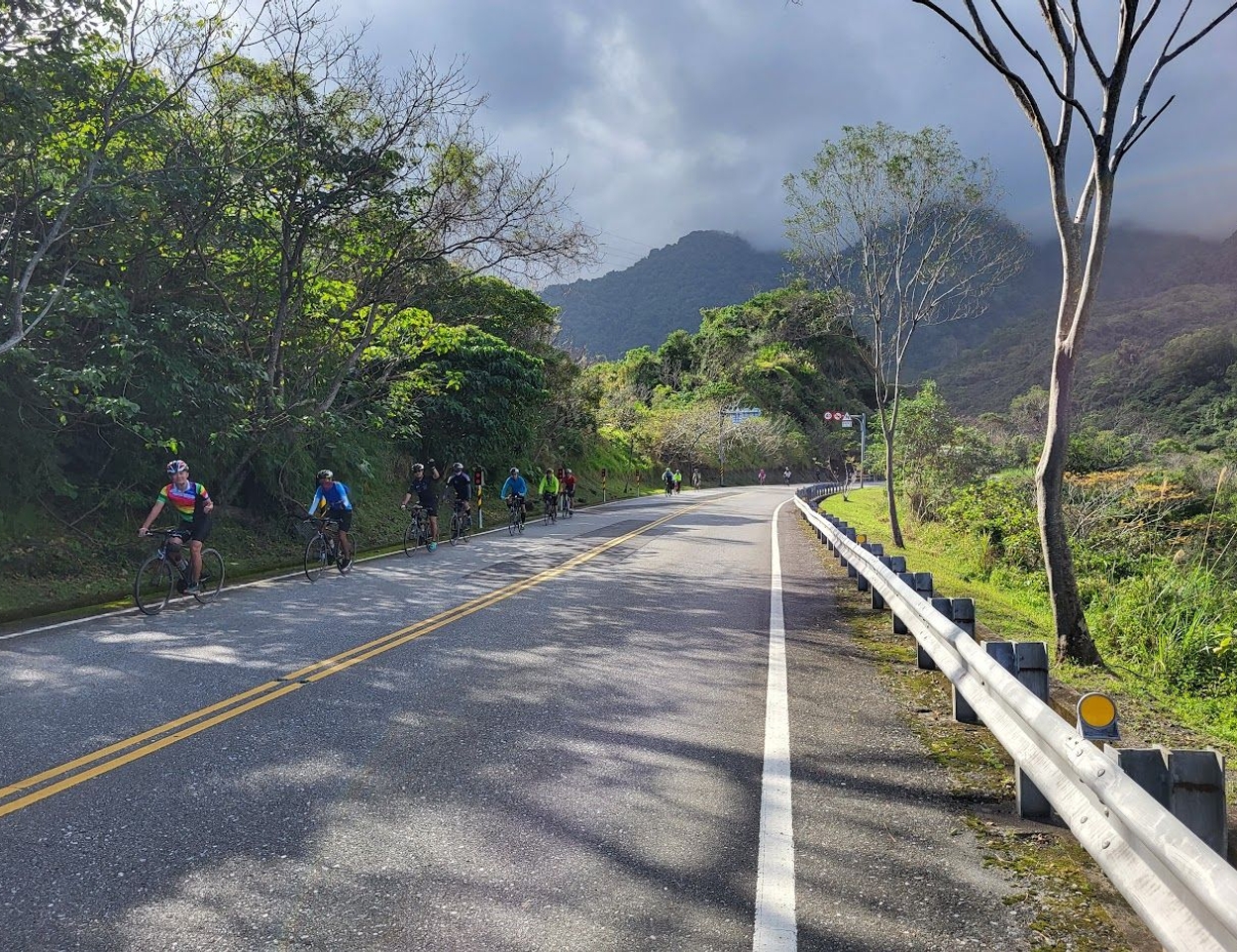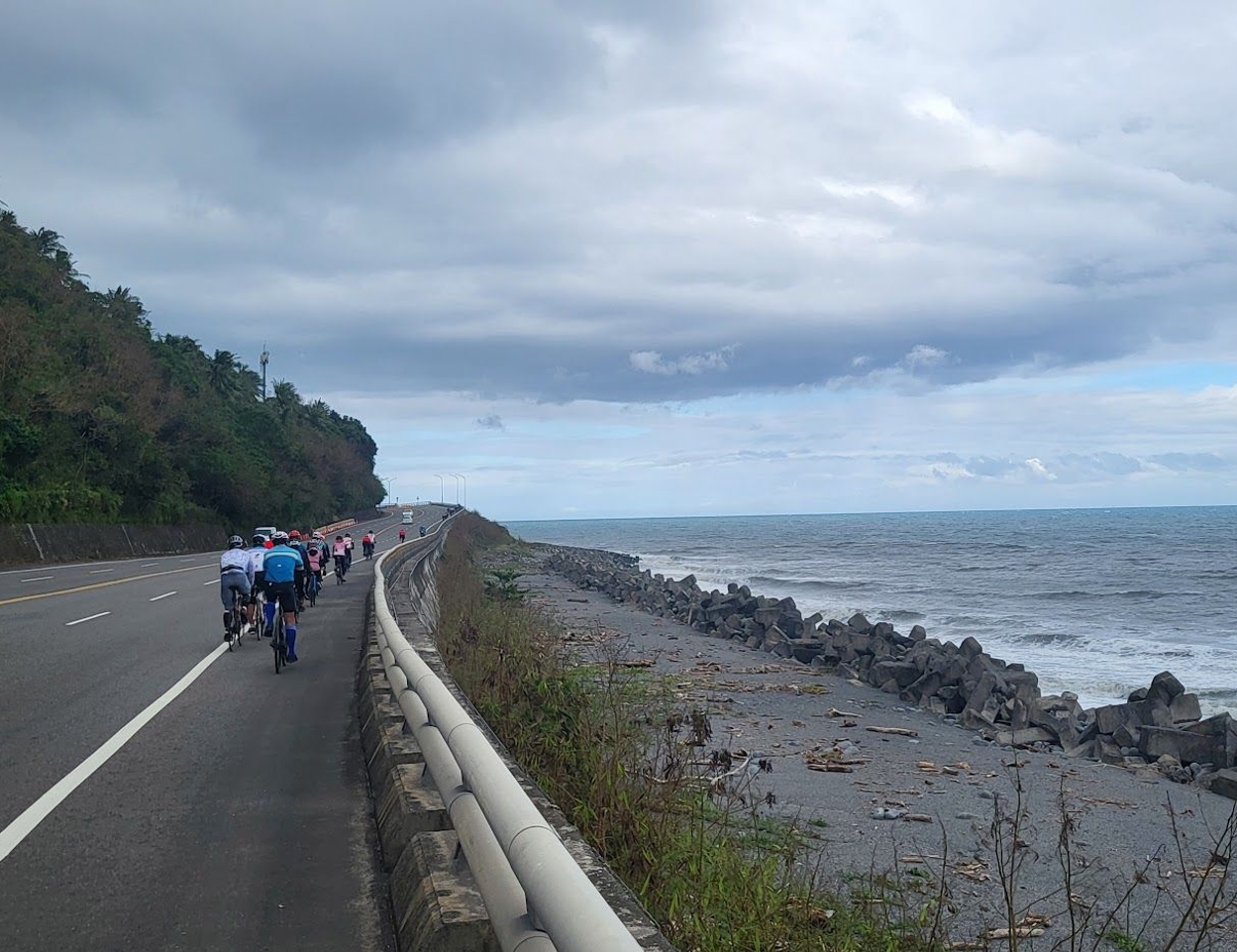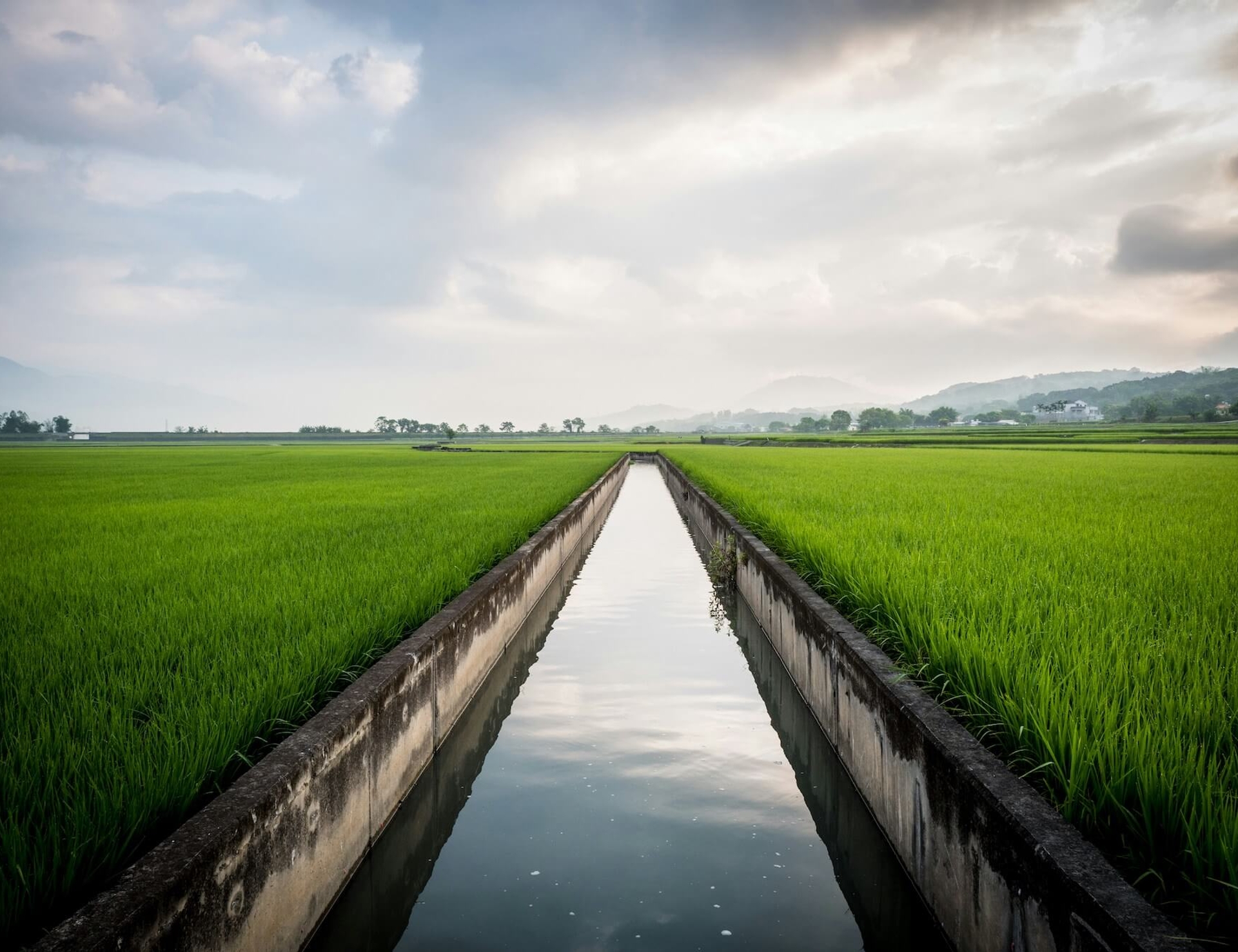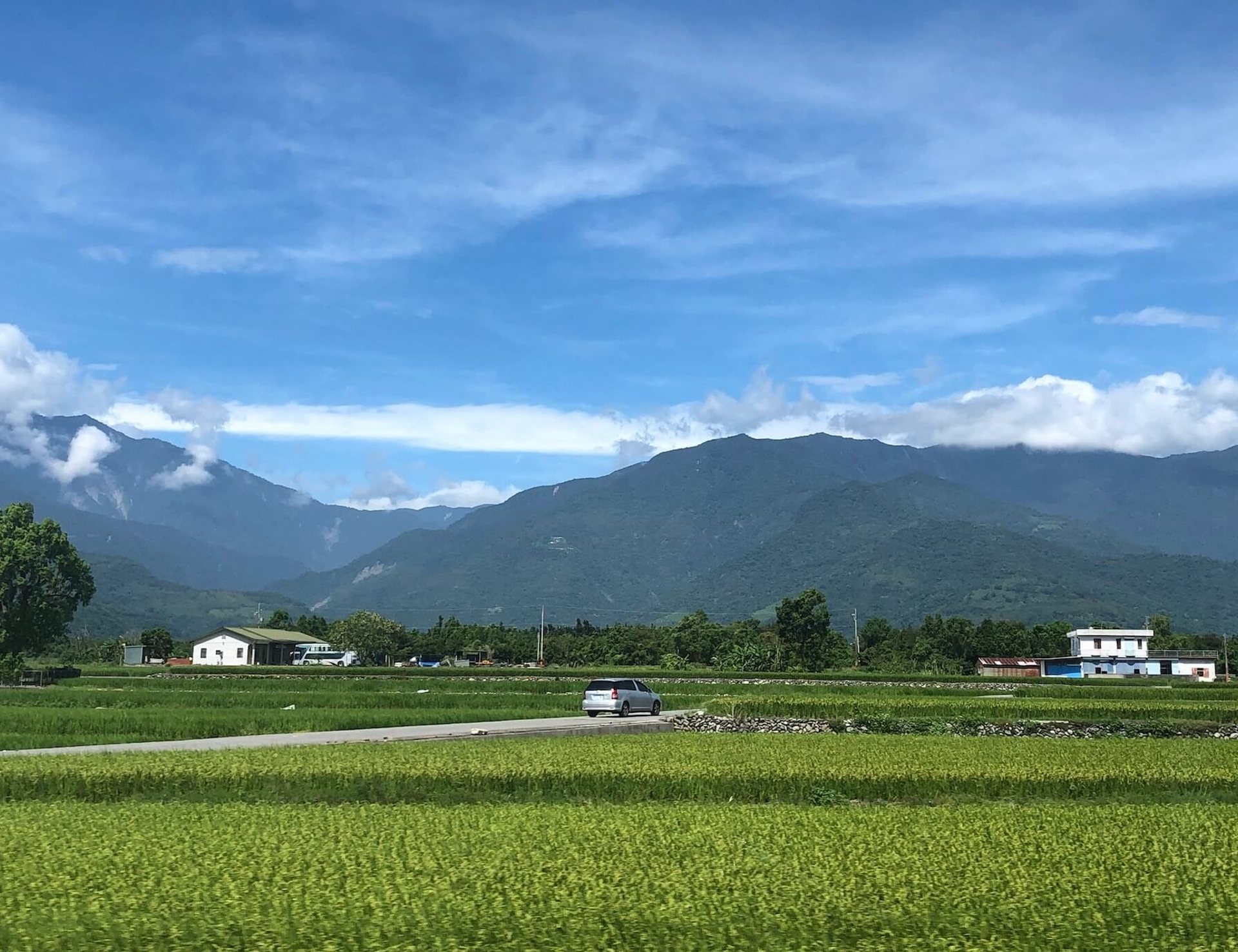
Table of Contents
- 1. Understanding Taiwan
- 2. Why Go Cycling Taiwan?
- 3. What are the Best Places to Cycle in Taiwan?
- 4. What are the Best Cycling Routes in Taiwan?
- 5. When is the Best Time to Cycle in Taiwan?
- 6. Enjoying Taiwanese Cuisine
- 7. Taiwan Visa Requirements
- 8. Handy Info
- 9. Through the Notes
- 10. Embrace Taiwan Cycling Adventure
Understanding Taiwan
Topography
Taiwan, officially called the Republic of China (ROC), is an island nation in the Pacific Ocean situated between the latitudes 22° and 25.3 °N, and the longitudes 120 and 122° E. The country is separated from the Chinese mainland (People’s Republic of China) by the Taiwan Strait.
Although its territory comprises several islands, the island of Taiwan, previously known as Formosa, makes up 99% of its area. It extends approximately 245 miles (395 km) from north to south and measures 90 miles (145 km) at its widest.
Taiwan is a mountainous country, with over two-thirds of its land area covered by rugged mountains. It has several peaks higher than 3,500 m above sea level, making it the fourth highest island in the world. Most of its population of about 24 million inhabitants is concentrated along its relatively flat western coast.
Riders should expect cycling in Taiwan to be moderately challenging, with rolling hills and the occasional testing climb.
Fauna and Flora
Over 60% of Taiwan’s area is covered by forests. The vegetation changes from tropical rainforests to alpine vegetation with increasing altitude. These include several species of trees found only in Taiwan including the Formosan cypress and the Taiwan fir.
Taiwan also has a very large number of endemic bird species. However, the island does not have many carnivores. The Formosan Black Bear is the largest carnivore in Taiwan, and it is a rare and highly endangered species. 64% of all mammals found in Taiwan are endemic to the island.
Taiwan is home to over 65 species of fireflies, the third largest number in the world after Jamaica and Costa Rica.
Climate
The Tropic of Cancer passes through the country, and most of Taiwan has a tropical or subtropical climate moderated by its proximity to the sea.
The best cycling routes in Taiwan are located along its eastern coast, and this region sees temperatures in the range of 16-32 °C for most of the year. This part of Taiwan also sees heavy rainfall from June to September.
Economy
Taiwan is a highly developed country that has the 20th largest nominal GDP in the world. Its export-focused industrial sector is the backbone of the Taiwanese economy. The country is especially a global leader in semiconductor and electronics manufacturing.
Leading electronics firms such as Acer, Asus, and Foxconn are all headquartered in Taiwan. Taiwan Semiconductor Manufacturing Company (TSMC) is the largest dedicated independent semiconductor foundry in the world.
Giant Manufacturing Co. Ltd, the largest bicycle manufacturer in the world, is a Taiwanese company.
Taipei 101, once the world’s tallest building, is located in Taiwan’s capital Taipei.
Agriculture accounts for less than 2% of Taiwan’s economy.
As of 2023, Taiwan’s nominal GDP per capita was $33,907.
DREAMING OF CYCLING IN TAIWAN?
Explore our amazing bike tours in Taiwan now!
Why Go Cycling Taiwan?
When it comes to biking, Taiwan offers an experience few other countries can match. Here’s just a few reasons why you should consider Taiwan for your next cycling holiday.
-
Taiwan Is Made for Cycling — Taiwan is probably the only country in the world with dedicated bike lanes extending all around the country, even into quiet back roads in remote areas. Taiwan’s famous cycling route no. 1 is a 968 km cycling route with dedicated bicycle tracks that goes around the entire circumference of the island. In Taiwan, bridges and flyovers have dedicated bike lanes, and even stairs are bike friendly. Several cycling routes have designated rest stops, and there are many bike hotels with dedicated bike areas where riders can wash and repair their bikes.
-
It’s a Tropical Paradise — With lush green rainforests, jagged mountains, a spectacular coastline, and delicious food, Taiwan is the very definition of the term tropical paradise. Some of Taiwan’s iconic sites to cycle through are the Taroko Gorge, Kenting coral reefs
-
Thermal Springs — With over 100 major hot springs and several other smaller ones spread out across its relatively small landmass, Taiwan has one of the highest density of thermal springs in the world. Taiwan also has a very large variety of thermal springs, with cold springs, mud springs, and seabed hot water springs in addition to its hot springs.
-
Best Cycling Culture — Taiwan is often called the cycling capital of Asia because of its excellent cycling infrastructure, and the fact that cycling is an essential part of Taiwanese identity. Doing a bike trip around the island’s circumference — referred to locally as Huan Dao — has become a rite of passage among Taiwanese youth. Little surprise then, that the world’s largest bicycle maker, Giant, is headquartered in Taiwan. Biking in Taiwan is an excellent way to connect with other cyclists and be a part of a larger cycling community.
What are the Best Places to Cycle in Taiwan?
The Coast
In Taiwan, most cycling happens along its coast, as the interiors are mountainous and covered in forests. The Cycling Route No 1 winds along Taiwan’s circumference, providing great views of both the ocean and the mountains. Unless doing the entire 968 km loop, most cyclists make a choice between either the east coast or the west coast.
Nantou County
Nantou County is located close to the geographical center of Taiwan, and is the only non-coastal county out of Taiwan’s 13 counties. Nantou, like the rest of Taiwan’s interior, is mountainous and forested. As a result, most of the biking here takes the form of trail biking around popular tourist destinations such as the Sun Moon Lake.
Located close to the Sun Moon Lake is the Jiji Bike Trail, a short biking path famous for its 1,000 eucalyptus and camphor trees planted on either side of the road that form a green tunnel stretching for over 4 kms.
While it is possible to cycle in Taiwan’s interiors, keep in mind the climbs can get very steep, very soon. Some roads can have gradients as steep as 27%. Most of the biking here is trail biking.
What are the Best Cycling Routes in Taiwan?
Kaohsiung to Hualien on the East Coast
This bike route starts from Kaohsiung on Taiwan’s southern tip to the Taroko gorge, covering the best of Taiwan’s east coast. With 90% of Taiwan’s population concentrated in the west, Taiwan’s east coast is a sparsely inhabited coastal paradise that combines ocean views with glimpses of rural Taiwan and beautiful mountain scenery.
Highlights
- East Rift Valley, a beautiful expanse of lush green valleys, tea plantations, and paddy fields cut through by rivers and mountain streams that is a delight to bike through
- Hot springs at Zhiben and Antong
- Taroko Gorge, famous for its marble canyons, dramatic cliffs, and the emerald green Liwu river flowing through it all
Sun Moon Lake Trip
The Sun Moon Lake is Taiwan’s largest lake. Situated in Nantou County, the lake is located at an altitude of 738 m above the sea level. Cyclists can do a 13 km biking loop around the lake, along with additional biking trails in the surrounding mountains. This beautiful trip was rated among the 10 most breathtaking cycling routes in the world by CNN (along with the Udaipur city loop, which you can read more about here)
PLANNING A CYCLING HOLIDAY IN TAIWAN?
Dive into our curated Taiwan cycling adventures today!
When is the Best Time to Cycle in Taiwan?
Cycling the East Coast of Taiwan
Spring, spanning from February to April, and autumn, which occurs between September and November, stand out as the prime seasons for cycling in Taiwan. Throughout spring, temperatures typically hover between 20°C to 28°C (68°F to 82°F), occasionally accompanied by refreshing rain showers. Autumn boasts even more inviting conditions, with temperatures ranging from 24°C to 30°C (75°F to 86°F) and with lower chances of rainfall. These seasons provide comfortable weather for cycling and exploring the scenic East Coast of Taiwan.
Enjoying Taiwanese Cuisine
Taiwan’s cuisine has been shaped by cultural interactions between Taiwanese indigenous populations, Chinese immigrants, Japanese colonialism, along with strong American influences. Some of the popular Taiwanese dishes include:
Beef Noodle Soup
Although traditionally, the Taiwanese avoided eating beef due to the scarcity of cattle on the island, cultural influences from China have made beef noodle soup one of the most popular dishes in Taiwan. In fact, it is sometimes referred to as Taiwan’s national dish.
Oyster Omelet
Oyster omelets are a popular street food in Taiwan. They’re made like regular omelets, except oysters are used instead of eggs, and are eaten with a savory sauce.
Stinky Tofu
Stinky tofu, as the name suggests, is fermented tofu with a strong smell. In Taiwan, it is prepared by fermenting tofu with meat and vegetables in brine, then deep frying it. The dish is then served with pickled cabbage and garlic sauce. It is a popular street snack in Taiwan.
Pineapple Cake
Taiwan is a major global producer of pineapple, and the pineapple cake is a dessert much enjoyed by the Taiwanese people. The cake is made using butter, flour, egg, sugar, and a filling of pineapple jam or pineapple slices mixed with winter melon. Pineapple cakes are commonly gifted to couples on their engagement, as they are believed to bless newlyweds with children. The cakes are a culinary symbol of Taiwan, and one of the most popular souvenirs for visitors to take home with them.
So important are pineapples and pineapple cakes to Taiwanese culture that Taipei holds an annual Pineapple Cake Cultural Festival in August, while the city of Kaohsiung in southern Taiwan is home to a Taiwan Pineapple Museum.
Oolong Tea
Taiwan produces around 20% of the world’s oolong tea. Taiwanese oolongs are regarded among tea connoisseurs as the “champagne of tea”. The country has a strong tea culture, and teahouses are a common sight in major Taiwanese cities.
Taiwan Visa Requirements
Taiwan has a graded visa policy wherein it provides visa-free access to several nationalities. Taiwanese visa-free entry policies further fall into the following three categories:
Countries With 90-day Visa Exemption
Residents of over 50 nations including the US, the UK, Australia, Canada, New Zealand, Japan, and the EU are eligible for visa-free entry to Taiwan for visits not exceeding 90 days. The complete list of countries that are exempt from Taiwan visa requirements for short-term stays can be viewed on the official website of the Taiwanese Bureau of Consular Affairs.
Countries With 30-day Visa Exemption
Residents of 8 countries including Malaysia, Singapore, and Belize do not require a Taiwanese visa for stays not exceeding 30 days.
Countries With 14-day Visa Exemption
Residents of 3 countries including Philippines, Thailand, and Brunei do not require visas for stays not exceeding 14 days.
Applicants applying for visa free entry must possess the following:
- A passport valid for at least another 6 months. However, US and Japan nationals who possess a passport valid for the duration of their intended stay can apply for visa-free entry.
- A confirmed return ticket.
eVisa
Taiwan issues eVisas to 19 countries including Bahrain, Turkey, Saudi Arabia, Oman, Panama, Peru, Qatar, and UAE. Citizens of Turkey are also eligible for a visa on arrival.
Additionally, certain other groups of travelers from countries including India, Indonesia, Myanmar, Vietnam, Laos, Cambodia, and Iran are eligible for eVisa provided they meet certain conditions. The complete list of countries eligible for various types of eVisas, and the eligibility conditions for each case can be found here. (PDF Download) Applicants for Taiwanese eVisa must have a passport valid for at least 6 months at the time of applying.
Citizens of the People’s Republic of China require entry and exit permits to visit Taiwan.
All other nationalities not covered in the above mentioned categories need to apply for a Taiwanese visa through the Taiwanese consulates or diplomatic missions in their respective countries.
Handy Info
Currency
Taiwan’s official currency is the New Taiwan Dollar (NT$). As of November 2023, 1 USD = 31.63 NT$.
Taiwan is a cash-heavy economy and it is good to carry local currency with you. You can exchange your currency for Taiwan Dollars at airports and designated money exchanges. International debit and credit cards work at some ATMs to withdraw Taiwan Dollars, but tourists often find them unreliable.
Transport
Taiwan has a well developed public transport system. The capital Taipei has a metro rail transport system called the Taipei Mass Rapid Transit or simply MRT. Buses and taxi cabs are available for both traveling within cities and for traveling between cities.
Uber is also available in Taiwan.
Visitors can also rent bikes for commuting within cities. YouBike is a popular bicycle sharing service that allows users to rent bikes for commuting within several Taiwanese cities and counties including Taipei, Taoyuan, Hsinchu County, Hsinchu City, Miaoli County, Taichung City, Chiayi City, Tainan City, Kaohsiung City, and Pingtung County.
Visitors can buy an EasyCard which allows them to access all forms of public transport including YouBike rentals. EasyCard can also be used at certain convenience stores, supermarkets, and taxi services.
The bike manufacturer Giant has over 300 stores across Taiwan from where visitors can rent bikes.
For commuting between cities, train and bus are the best options.Travel to any of the islands located off the Taiwanese mainland can be done by both sea and air.
Taiwan has 17 civil airports including 3 international airports.
Language
Mandarin Chinese is the official language, as well as its most widely spoken language. English is taught in Taiwanese schools, but most Taiwanese outside of major cities are not fluent in English.
Signboards in most major Taiwanese cities and on major tourist destinations are displayed in both Mandarin and English.
Culture and Religion
Taiwan is officially called the Republic of China (ROC) to distinguish it from the People’s Republic of China (PRC) which is the Chinese mainland. Taiwan’s political status as an independent sovereign state is contested by China, which claims the country as one of its provinces. As such, public opinion in Taiwan is split between those favoring reunification with China, and those advocating for an independent Taiwan.
Taiwanese culture is a blend of Chinese and indigenous Taiwanese culture. The island was originally inhabited by aborigines of Austronesian stock who practiced an animistic religion. Large scale Chinese immigration began in the 17th century. This led to the introduction of Buddhism and Taoism or Chinese folk religion to the island.
Today Buddhism and Taoism are the most popular religions in Taiwan, with over 70% of the population identifying themselves as an adherent of one of the two.
Because of its history of being under Japanese colonial rule, Taiwanese culture also displays strong elements of Japanese influence.
Religion is important to the everyday life of the Taiwanese people, and there is, on average, at least one religious building in Taiwan for every square kilometer of its land area. This is one of the highest density of religious buildings anywhere in the world.
When visiting religious places, it is important to maintain decorum and dress appropriately. It is good to ask permission before photographing religious places. Avoid taking pictures of military establishments.
On the whole, Taiwan has a free and liberal democratic political culture similar to that encountered in Western Europe and North America.
Taiwanese puppetry and Taiwanese opera are two popular cultural forms enjoyed by the common people of Taiwan. The Taiwan Traditional Theater Center in Taipei is a good place to enjoy traditional Taiwanese opera. The performances, however, are conducted in Mandarin.
Appliances and Devices
Electricity is supplied in Taiwan at 110V and 60 Hz. This is similar to the voltage range supplied in North America and Japan (110-127V). However, in most other parts of the world including the EU, the UK, Australia and New Zealand, electricity is supplied at 240V. If your device is not designed to operate at dual voltage, you may need to use a voltage transformer.
Taiwan uses two types of plugs — Plug A, which has two parallel flat pins, and Plug B, which has two parallel flat pins along with a ground pin. If your device has a different plug type, you may need to use a travel adapter.
Mobile Coverage
Taiwan has excellent mobile coverage in most areas, except in hilly and remote regions. As of November 2023, more than 90% of the island is covered by the 5G network.
Visitors can make international calls from their mobile phones as long as they have international roaming activated. For longer stays, it is recommended to buy a local SIM card.
ChungHwa Telecom (CHT) is the largest mobile service provider in Taiwan.
Time Zone
Taiwan follows Taipei Standard Time which is GMT+8.
What You May Find
Buddhist pagodas, beautiful mountains, cyclists.
Through the Notes
-
Read: Taipei, a novel by the Taiwanese-American novelist Tao Lin
-
Listen: Bunun traditional music of the indigenous people of Taiwan, songs of Vanessa Wu, a Taiwanese-American pop musician
-
Eat: Pineapple Cake, Taiwan’s most popular dessert
-
Watch: The films of Ang Lee, Oscar-winning Taiwanese-American director; Island Etude, a 2006 Taiwanese film about a hearing impaired student who goes on a round the island trip across Taiwan.
-
Drink: The world-famous Oolong Tea from Taiwan
Embrace Taiwan Cycling Adventure
When it comes to cycling, Taiwan offers an experience that few other countries in the world can match. Not only is the island breathtakingly beautiful, it also has one of the best cycling infrastructures in the world. A cycling holiday in Taiwan offers a unique way to take in all that this tropical island has to offer at your own pace, and at close quarters.
Art of Bicycle Trips has been a pioneer in organizing curated cycling holidays for over a decade. Our guided tours come with carefully chosen hotels, an expert tour leader, and support vehicle for maximum comfort and safety.
READY TO CYCLE TAIWAN?
Get started with your cycling adventure today!



